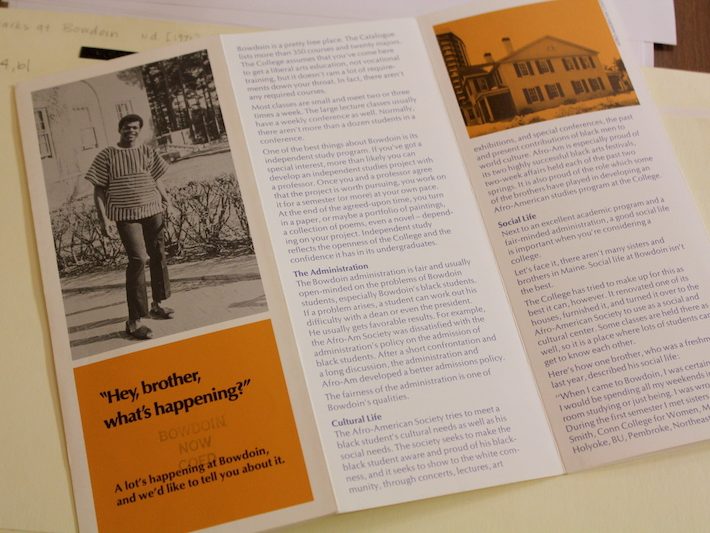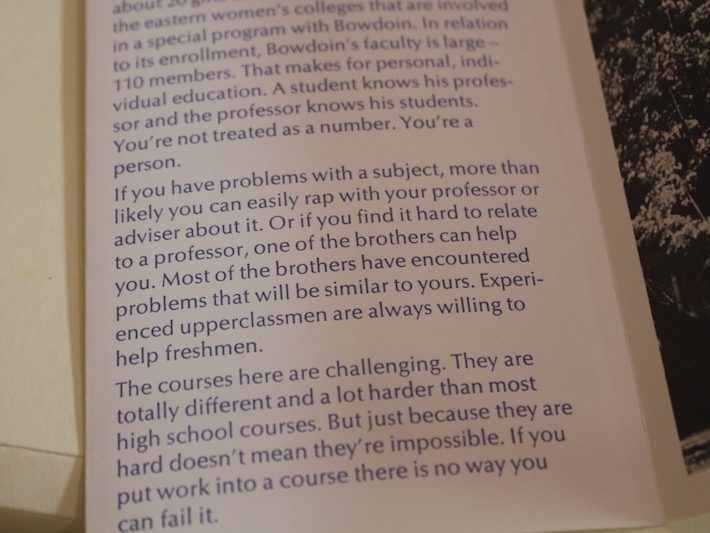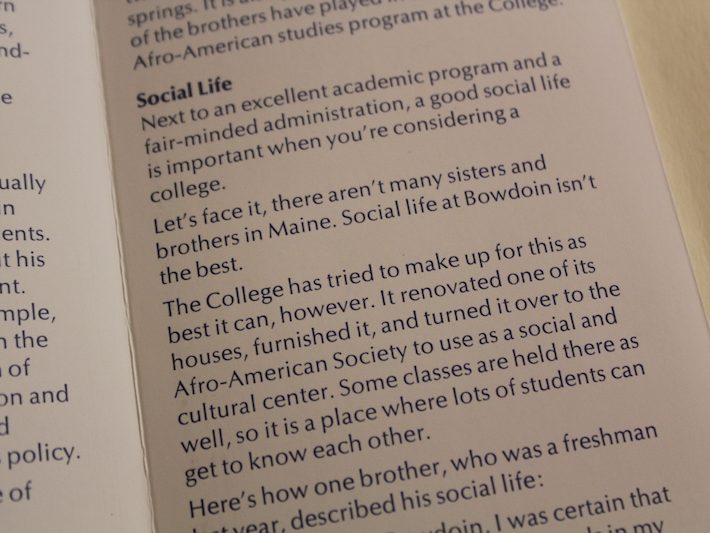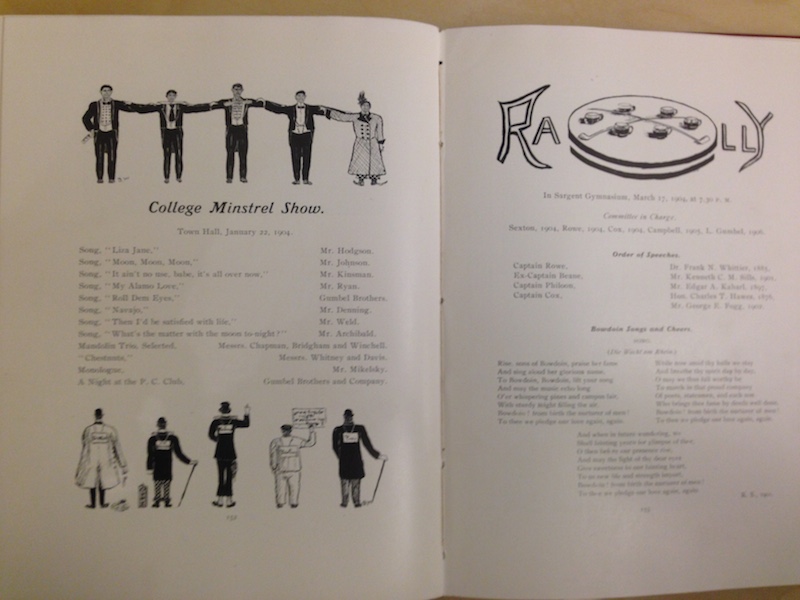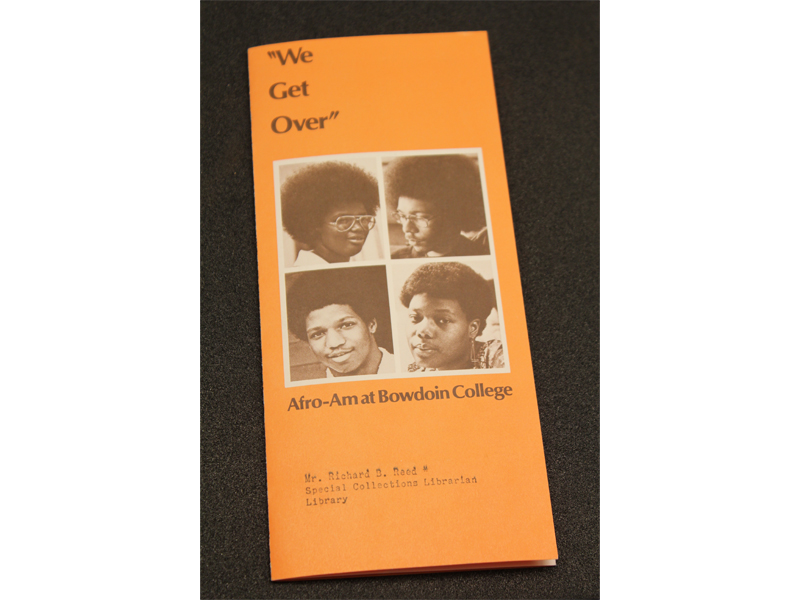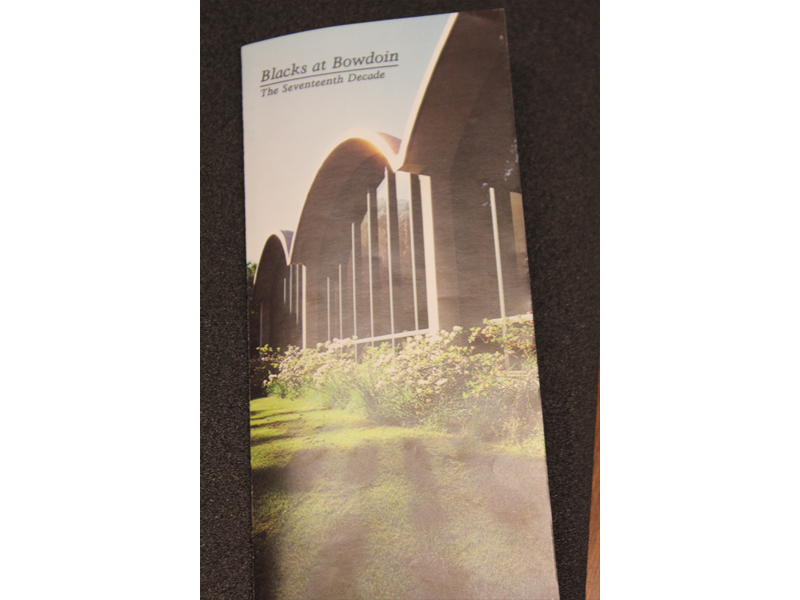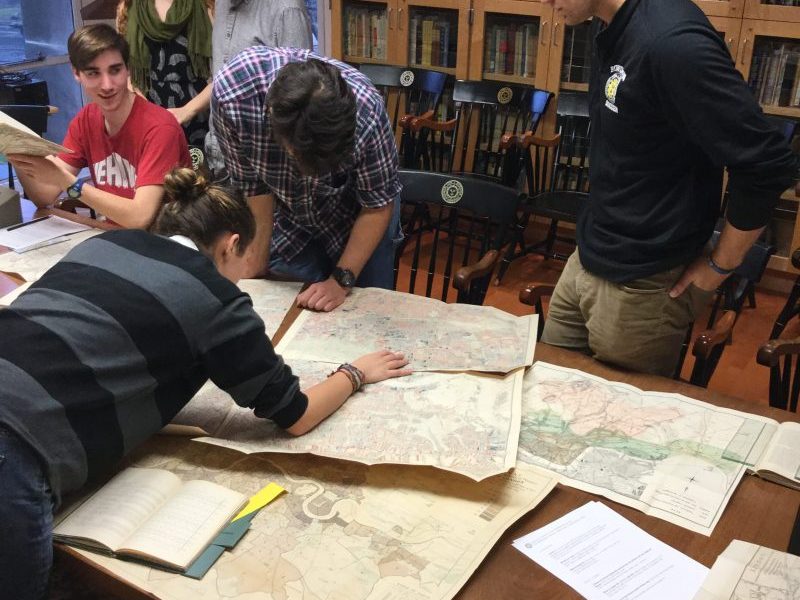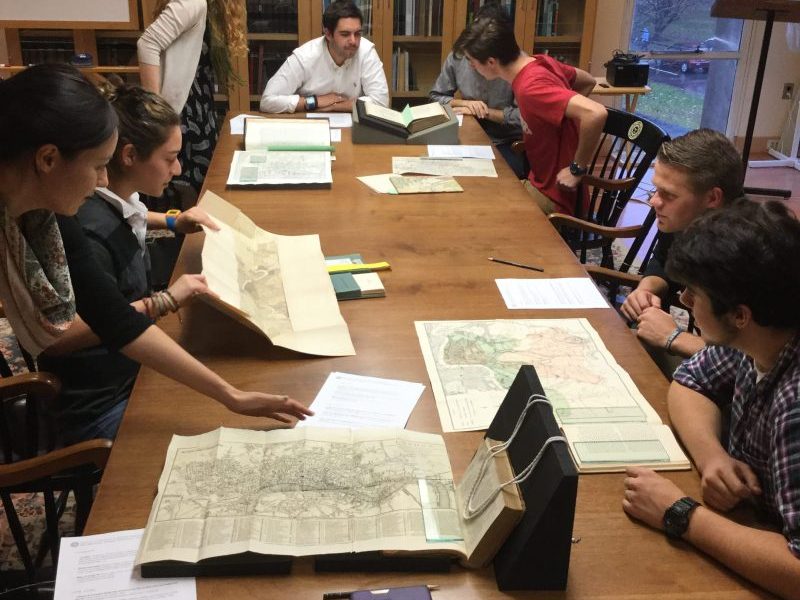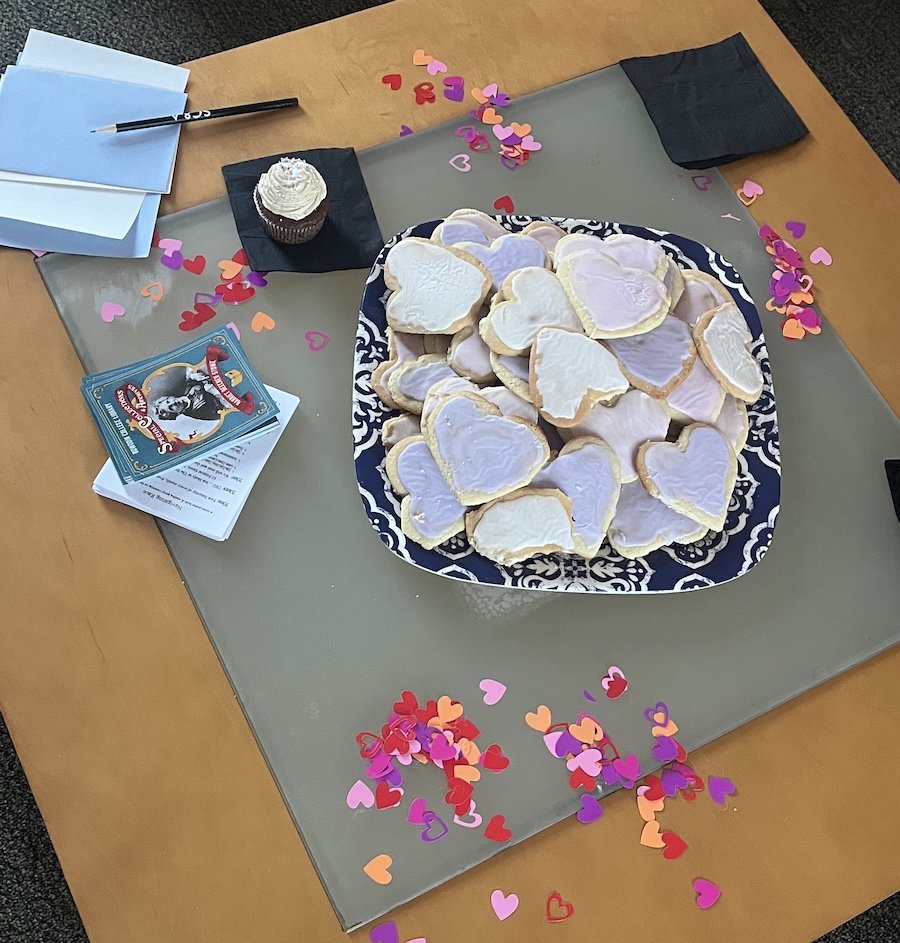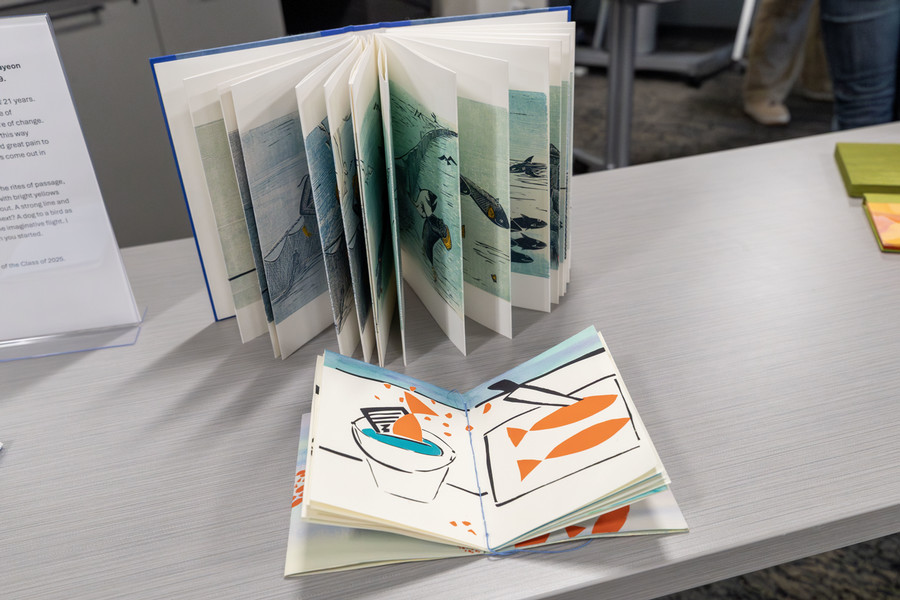No White Gloves: College Archives Give Students Hands-on History, Including the History of Race at Bowdoin
By Rebecca Goldfine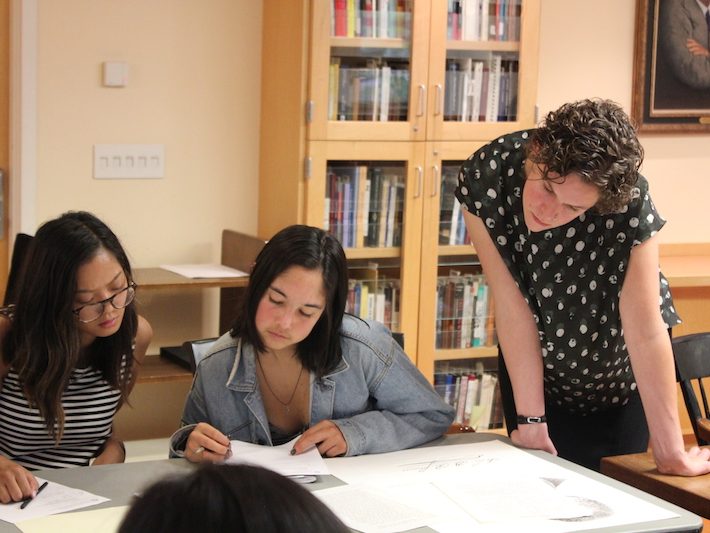
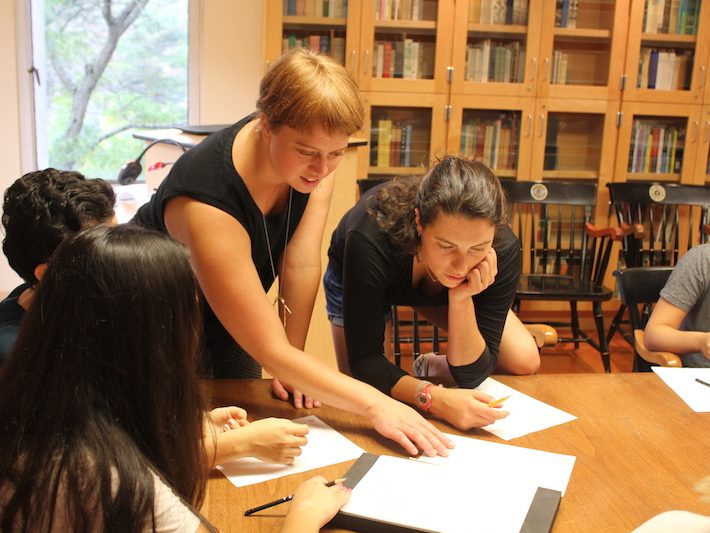
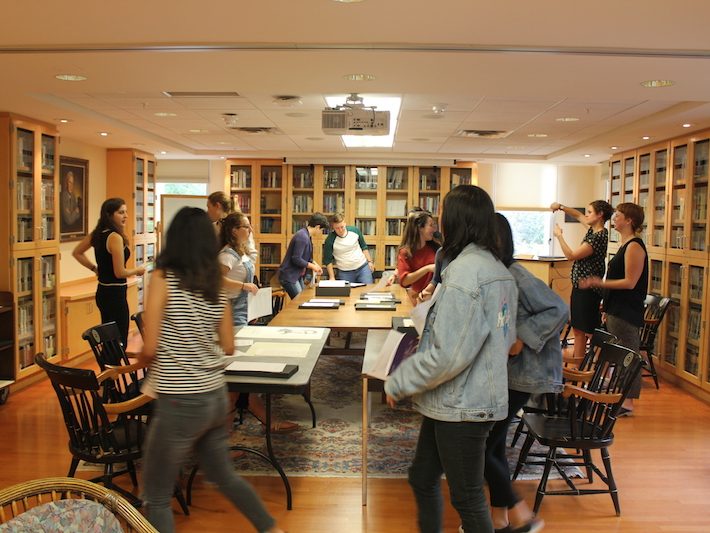
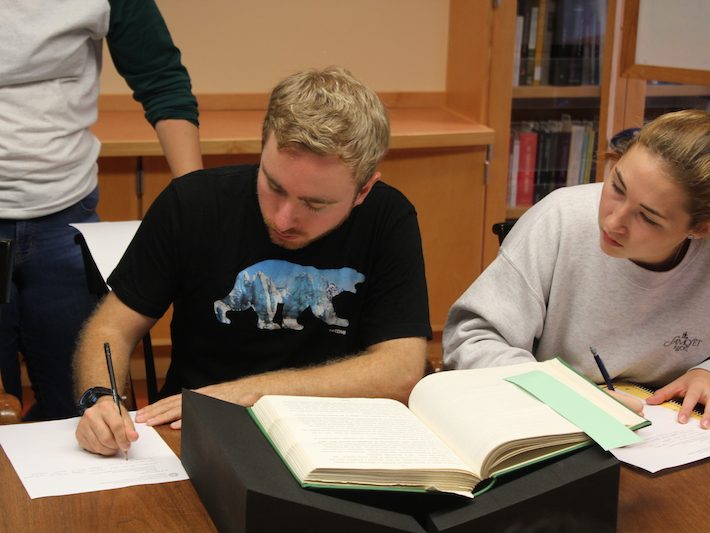
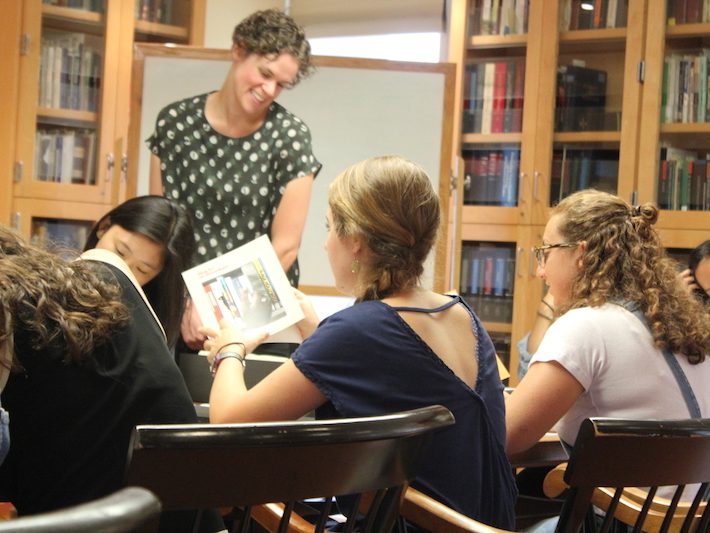
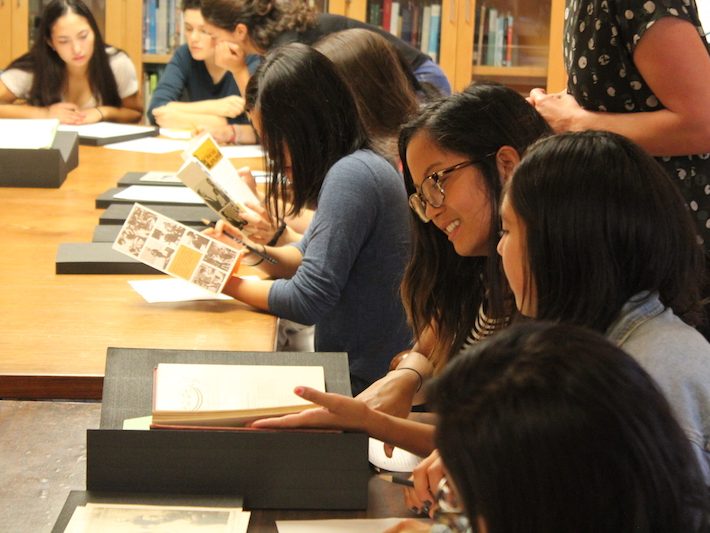
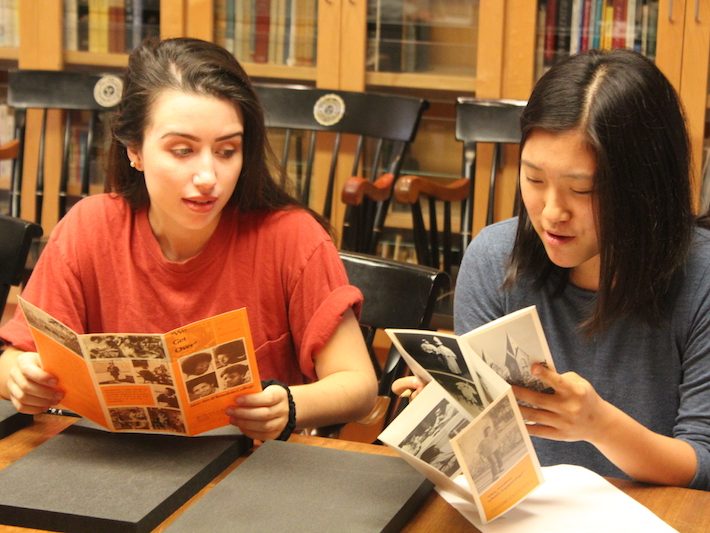
To prepare for a visit from a sociology class, librarian Marieke Van Der Steenhoven recently assembled a selection of memos, photographs, pamphlets and other material about the history of African American students at Bowdoin. These materials from the Bowdoin archives tell a complex story. Some of these records would end up making the students wince at their racial insensitivity — while others, despite being a few decades old, revealed a more self-reflective and progressive attitude for the time.
Among the items Van Der Steenhoven shared with the students was a 1905 Bowdoin yearbook, opened to a page that documented an annual minstrel show performed by white students and faculty, some in blackface. She also presented the 1826 commencement speech of Bowdoin’s first African-American graduate, John Brown Russwurm. And she showed 1970s admissions brochures from the College’s admissions office designed to encourage more black students to apply to Bowdoin.
When the students in Sociology 3320: Diversity in Higher Education arrived, they and their professor, Assistant Professor of Sociology Ingrid Nelson, rotated through Van Der Steenhoven’s five stations of records, each grouped by theme. There were stations dedicated to Russwurm, minstrel shows and the admissions materials. Another included memos from a 1960s campus debate on extending a financial aid programs to attract more black students. The fifth documented the start of the College’s African-American Studies department.
“These are documents that cover and explore the history of Bowdoin,” Van Der Steenhoven said to the students. “There are a variety of different voices you’ll encounter in the materials I selected for you today: presidents, deans, students, and faculty.”
Van Der Steenhoven is Bowdoin’s education and outreach librarian for the George J. Mitchell Department of Special Collections & Archives. Her job is to connect students and faculty to the College’s archives and special collections—its rare books, manuscripts, college records, photographs, letters, and other objects. In this capacity, she teaches students “the tools of information, archival, and visual literacy,” she said.
“I want students to know Special Collections exists and to offer them the tools for how to effectively engage with the material,” she added. “They should consider this material theirs in the same way they consider all the other resources at Bowdoin at their disposal.”
Each year, Van Der Steenhoven scours the course catalog to pick out classes that might overlap with Bowdoin’s archives, which are vast and varied. “Bowdoin has such amazing collections, they are really remarkable,” she said. “They span everything from William Henry Fox Talbot’s The Pencil of Nature (the first book illustrated with photography) to illuminated medieval manuscripts, contemporary artists’ books, Civil War correspondence and primary sources about the history of the College.” Over the years, a committed group of professors return every year with their classes, she noted.
Last year, Nelson visited Special Collections with another sociology class she teaches, Race and Ethnicity. Van Der Steenhoven showed the class a variety of sources that dealt with race, including early European travel writing describing Native Americans, Samuel Morton’s Crania Americana (which compares the skulls of aboriginal people), Bowdoin photography and yearbooks exposing the tradition of minstrel shows on campus, and the work of contemporary book artists responding to racism. The students discussed how these documents inform our current understanding of race and ethnicity.
This year, Nelson decided again to use the archives, this time for her higher education class. “We’re thinking about how this concept of diversity [at elite colleges and universities] has changed over time to serve different purposes,” she said. “We’re looking at why it has changed, how it has changed, and what it looks like now.”
“Here is history. Touch it, look at it, and come to your own thoughts about it.”
—Assistant Professor of Sociology Ingrid Nelson
While the course is focused on how U.S. universities and colleges are addressing diversity on campus today, Nelson said looking back in time is a helpful exercise for her students. For one, it is often more painless to identify racism, or at the very least poorly executed integration efforts, that took place in the past. “I think it is easier to spot it when you look at historical materials, and say, ‘Oh my gosh, can you believe what people did back then?'” Nelson said.
Digging into the archives also gives Nelson’s students a broader view in particular of Bowdoin, helping them set the college in its timeline as a former all-male, mostly white institution. Yet, Nelson points out, the archives don’t just offer a simplistic view of race in Bowdoin’s past; instead, the picture is more nuanced. And this, too, is valuable for students to discover, she said. “There is a lot of back and forth in these historical conversations, and who is telling the story matters,” she noted.
After their preliminary visit to Special Collections, some of Nelson’s students returned to the archives to do more research. Sydney Avitia-Jacques ’18 and her group went to learn more about Bowdoin’s study-abroad programs. “We looked at how the privileges afforded to white culture and curriculum extend beyond Bowdoin and follow students when they study abroad,” she wrote in an email. They read historical correspondence between deans and faculty on vetting study-abroad programs and old guides to studying abroad written by students. “Our goal wasn’t to blame decision-makers at Bowdoin, past or present, for the privileging of whiteness, but rather to explain why it exists through contextualizing ourselves in history,” she explained.
By touching, reading and looking at old documents, students are able to grapple directly with their implications, rather than simply read a secondary analysis of it or listen to a professor give their version of events, Nelson said. “Here is history,” she added. “Touch it, look at it, and come to your own thoughts about it.”
“There is a lot of brain science and literature to support collaborative and active learning, and that is what I emphasize in working with faculty to design class sessions in Special Collections,” Van Der Steenhoven said.
Classes in the past that have heavily used special collections and engaged with active learning in the archives include: Shoot, Snap, Instagram: A History of Photography in America, taught by Assistant Professor of Art History Dana Byrd; Maps, Territory, and Power, with Assistant Professor of Asian Studies and History Sakura Christmas; and Digital Media I, with Visiting Assistant Professor of Art Erin Johnson
